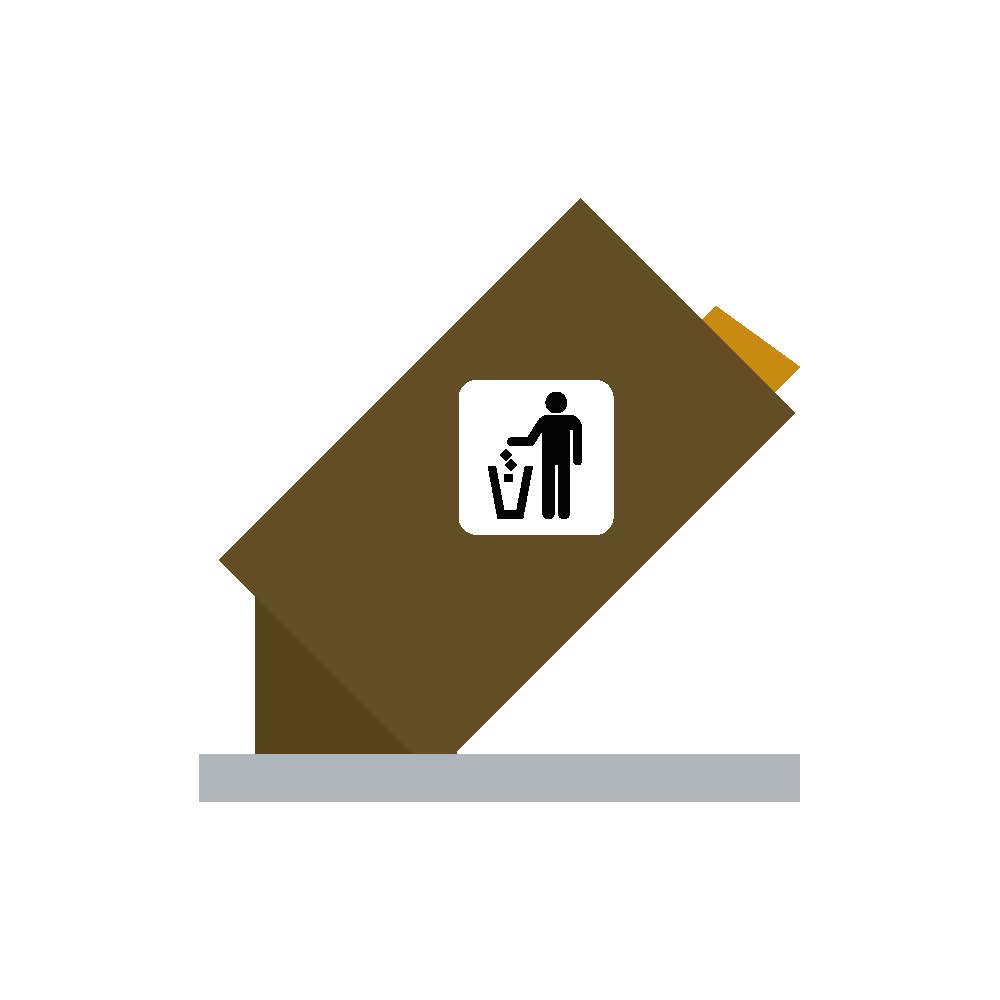For more detailed information about Alberta Parks regulations, please read our Regulations page.
For more detailed safety information, please check out our Outdoor Safety page.
Tread Lightly
For more detailed safety information about hiking, please review our Hiking & Backcountry Safety page.
- Use trails where they exist. Stay on the trail even if it's wet or muddy. Otherwise, multiple trails result ("braiding") which further damages the landscape.
- Don't short-cut switchbacks. It encourages others to follow and causes erosion.
- Walk on durable surfaces such as trails, rock, gravel and dry grasses. Avoid walking on fragile vegetation, especially along stream banks.
- Camp in designated campsites.
- Be considerate of other visitors. Share the trail. Step to the downhill side of the trail when encountering horses.
- Avoid excessive noise so that everyone can enjoy the peace and tranquility of parks. Wear headphones if using electronic devices. Loud partying, stereos at high volume and other rowdy behavior are not tolerated at any time.
Take only Photographs, Leave Only Footprints
- Preserve the past: examine, but do not touch cultural or historic structures and artifacts.
- Leave rocks, plants and other natural objects as you find them.
- Avoid introducing or transporting non-native species. Clean, drain and dry your boats and equipment. Read more about Aquatic Invasive Species here.
- Do not build structures, furniture or dig trenches.
- Never place bird feeders in provincial parks or protected areas. Bird feeders transmit avian diseases, attract other types of wildlife and the seeds can introduce non-native plant species.
If You Pack it In, Pack it Out ... And Then Some
- Pack out all your trash, leftover food and hygiene products. Never burn your garbage
- If you see litter previously left by others, help us maintain these places we love - please pick it up and carry it out.

Put Waste in its Place
- Please dispose of your waste in the appropriate garbage/recycling bins or pack out your waste and take it with you in your vehicle when you leave.
- Use outhouses when available. Where there are no outhouses, bury waste in a cathole. Dig 15-20 centimetres (6-8 inches) deep and at least 50 metres from any water. Please carry out your toilet paper.
- Bathe and wash dishes well away from any water source. Never wash dishes in a stream or lake. Follow any applicable signage about water sources if present.
- Dispose of soapy ("grey") water in specific grey water disposal systems or outhouses where provided. Otherwise, pour wash water into a sumphole away from camp and water sources. Then fill the hole with dirt.
- When disposing of fish guts (offal), first pierce the air bladder. Then throw the fish guts far out into the lake.
Give Wildlife Their Space
For more detailed safety information about wildlife, please review our Wildlife & You page.
- Stay on trails whenever possible.
- Keep your distance from wildlife. Never follow or approach wildlife. Never feed wildlife.
- Keep your pet on a leash. This protects your pet as well as wildlife. You can read our Pets in Parks Regulations here.
- Respect trail closures and restrictions. Reasons for restrictions can include bear activity, sheep calving, wolf denning and wildlife corridors. You can check for trail closures on our Advisories page.
- Learn to recognize prime bear feeding habitat and food sources. Consider choosing an alternate trail until the ripened berries are finished. You can read more about Bear Safety here.
Use Fire Carefully ... Or Not at All
For more detailed safety information about fires, please review our Fire Safety page.
- Campfires are permitted in certain areas. However, we recommend you use a portable gas stove for cooking. Stoves are quicker to light, easier on the environment - and cleaner to cook over!
- In the backcountry in Provincial Parks, campfires are only permitted in firepits provided at some designated sites.
- In Wildland Provincial Parks, campfires are permitted. Use provided firepits or established fire rings when available.
- Keep your fire small. If using deadfall in a Wildland Provincial Park, use only sticks that can be broken by hand. Burn all your wood to ash. Before leaving camp, ensure your fire is out and cold to the touch.
